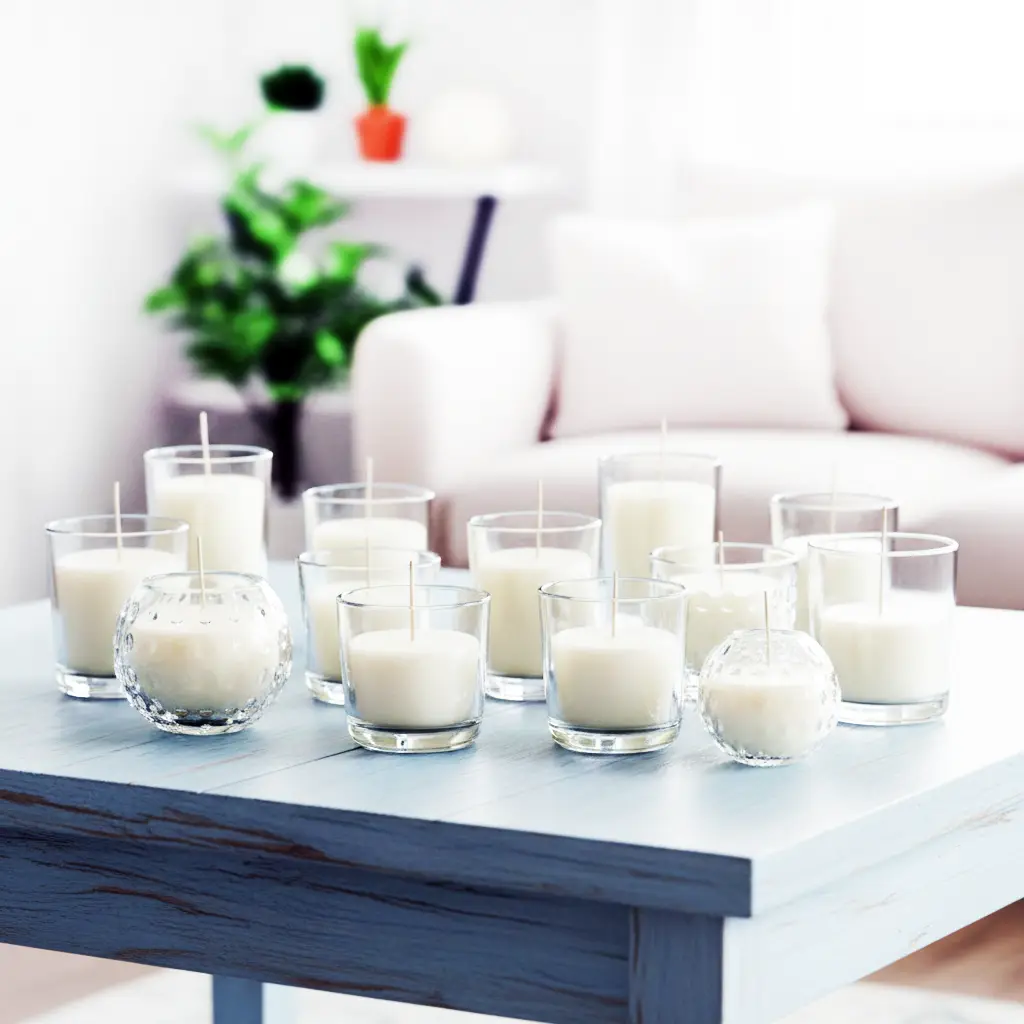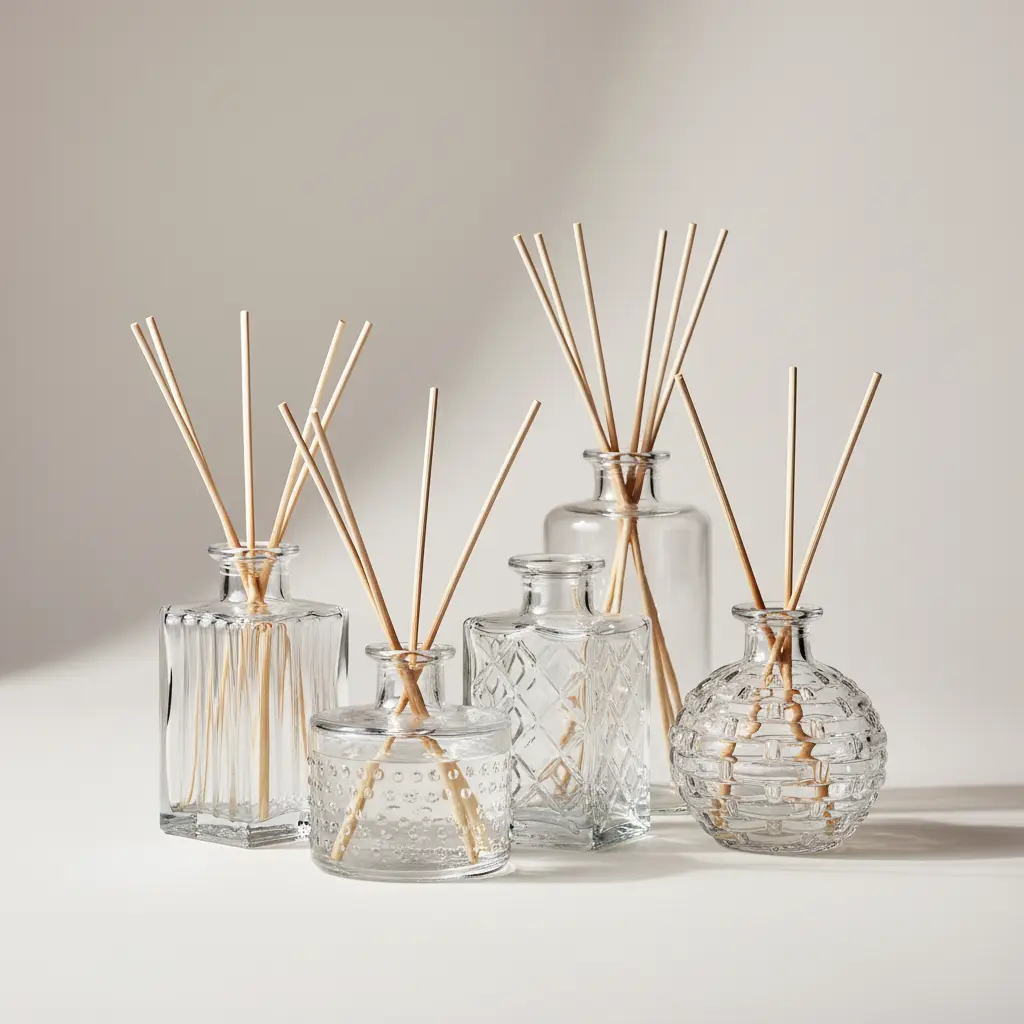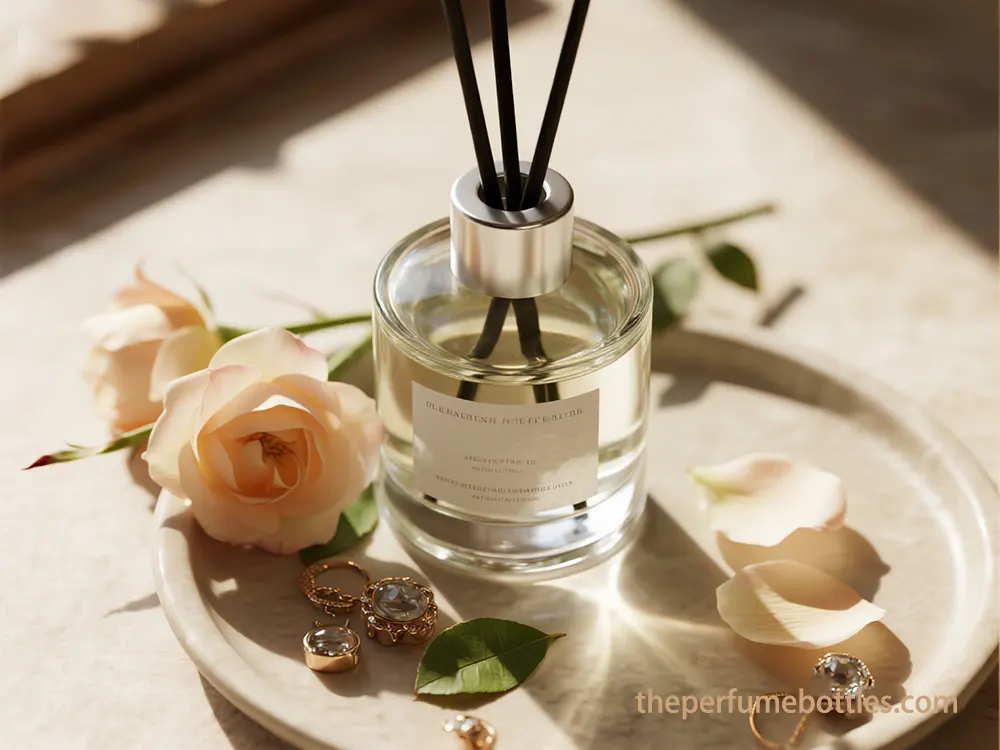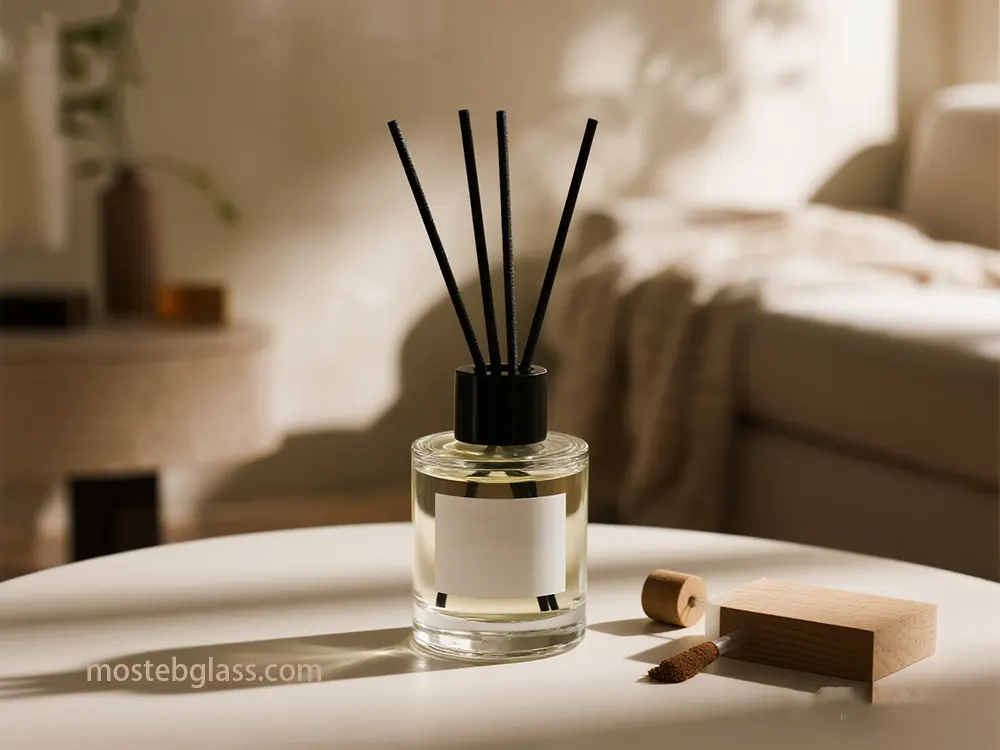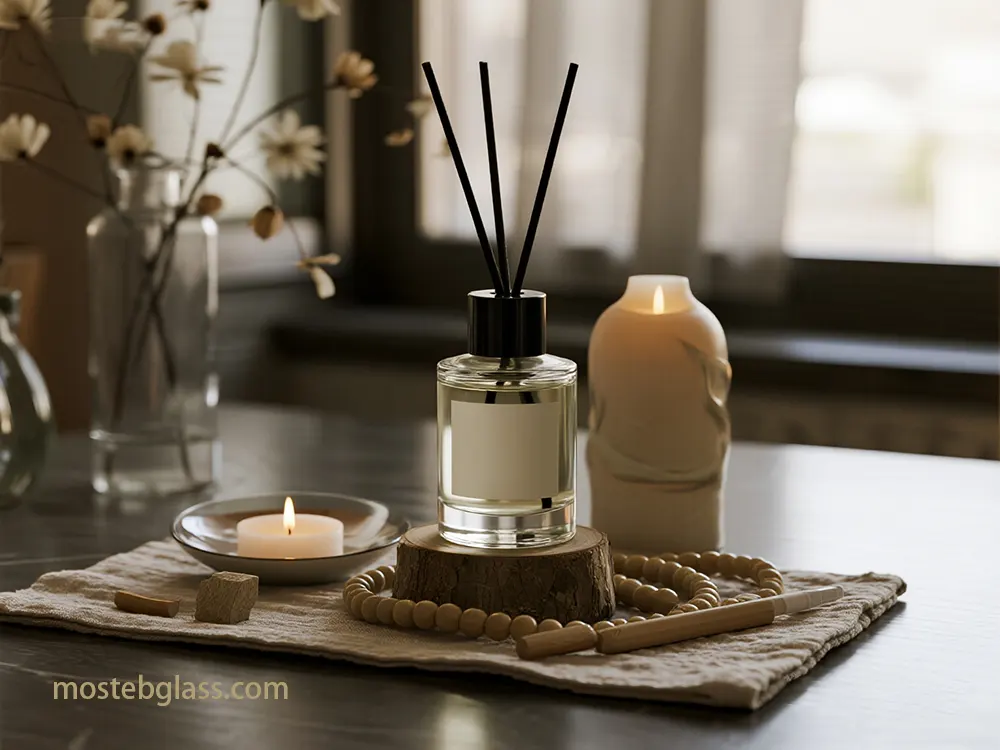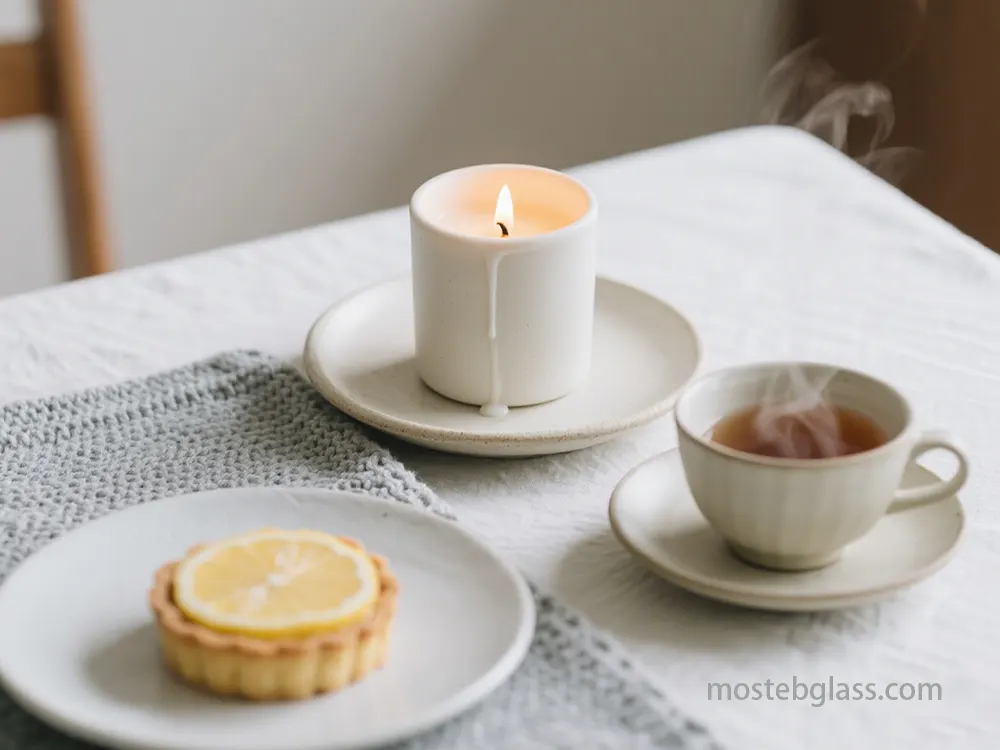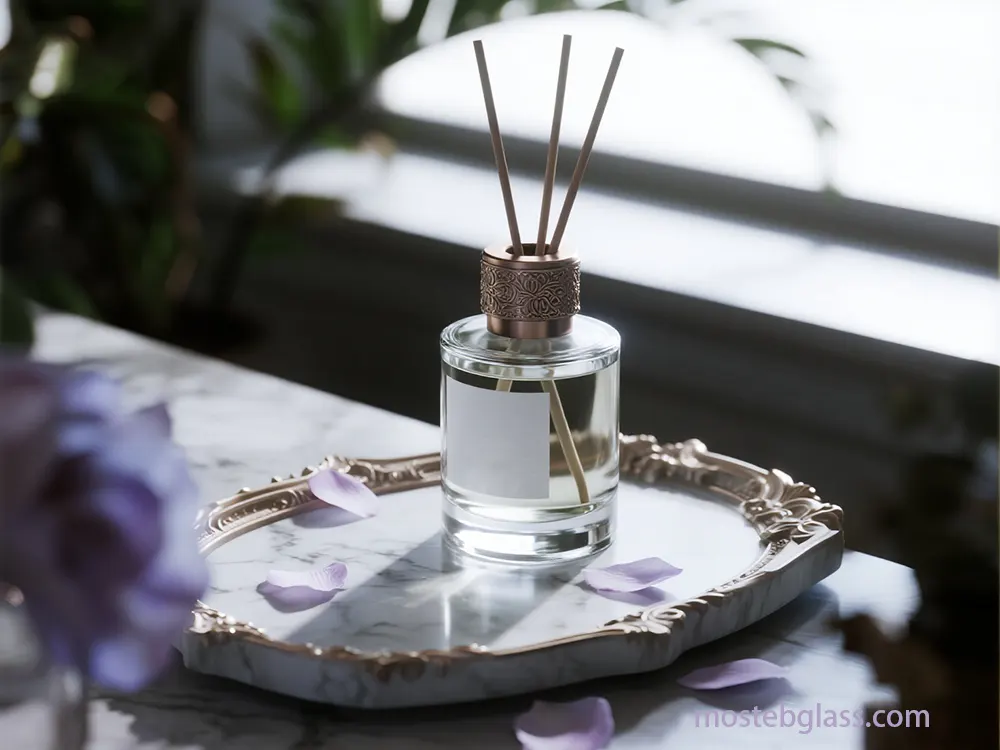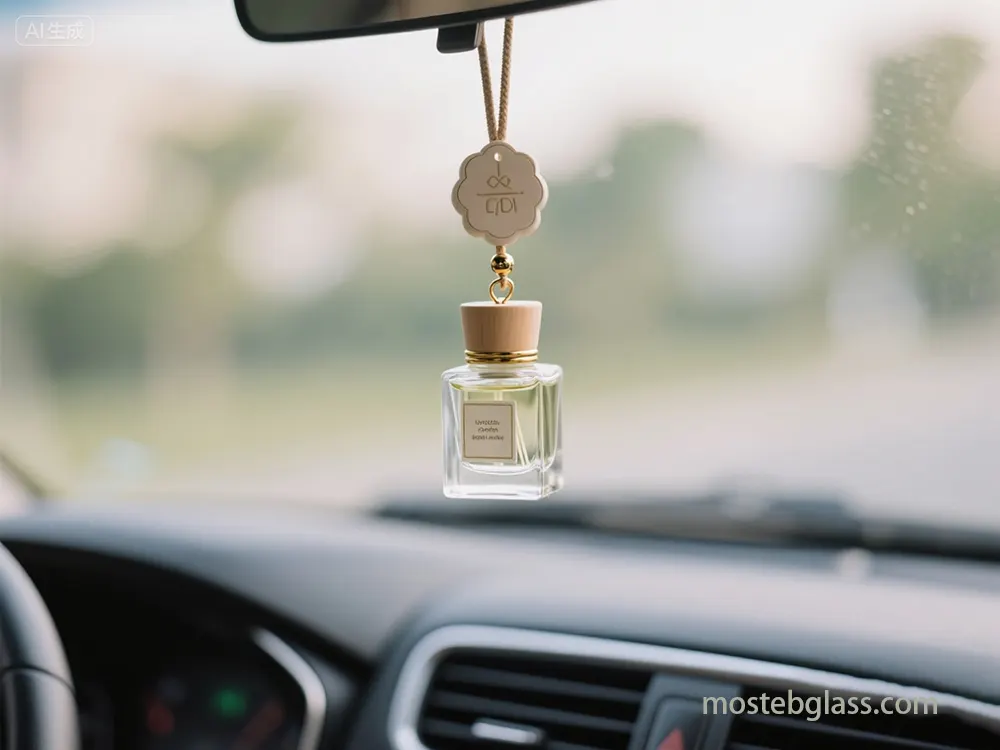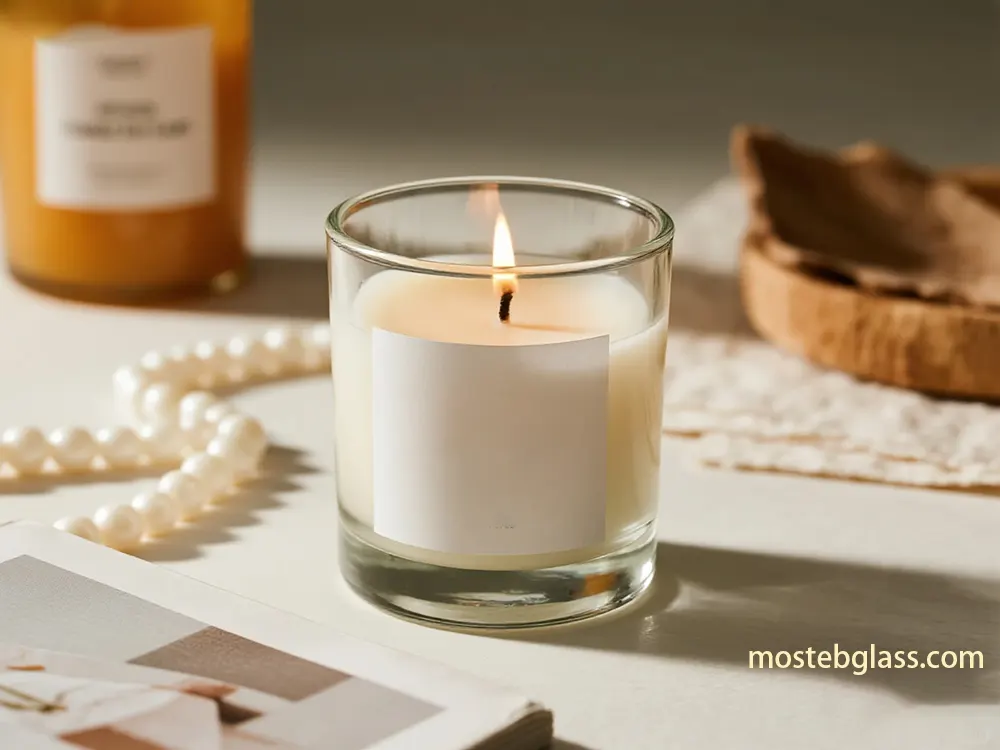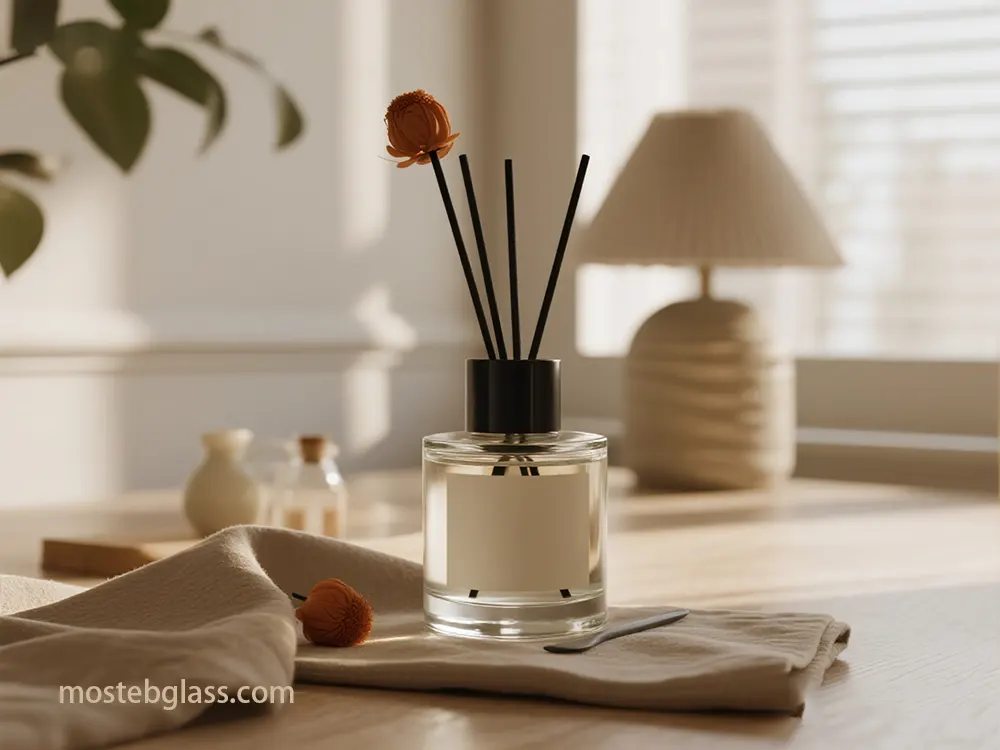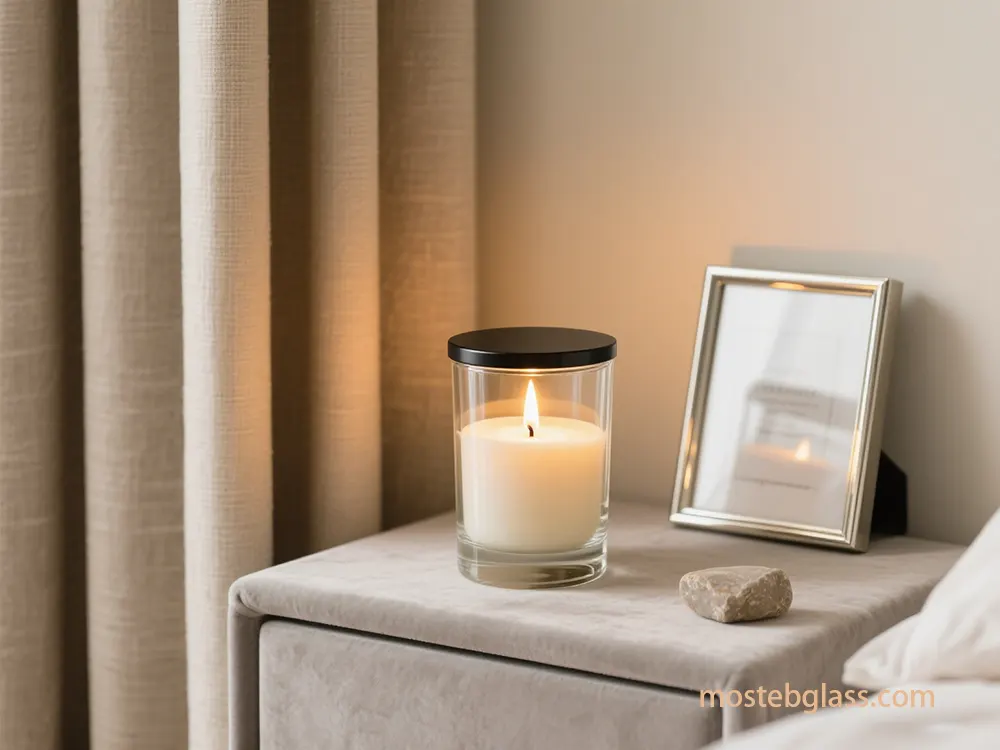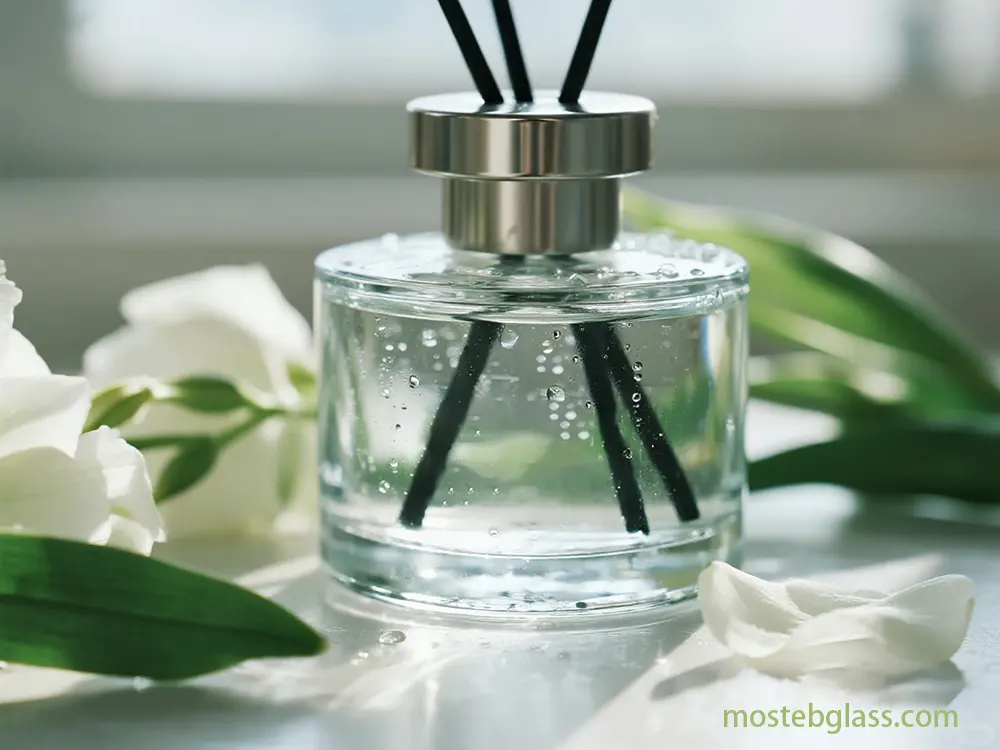A glass diffuser bottles dealer serving luxury brands within the perfume industry provides packaging that not only extends brand identity but also delivers a multisensory experience. A company in this field must impress an aesthetic, accomplish strategic sourcing, and build collaborative partnerships. This report lays the foundation for luxury fragrance packaging while also highlighting Mosteb’s value, trends, and best practices.
1. Defining Your Fragrance Brand's Aesthetic
One of the most important steps of transforming not only brand, but also life essence to packaging is branding itself. This entails an all-encompassing approach, where product design is in tune with the consumer base and produces brand image.
1.1. Translating Brand Identity into Design
Luxury brands mirror their core aesthetic by first gaining an insight into the target consumers (age, gender, lifestyle, tastes) and then incorporating brand values, character, and unique value proposition (UVP) in a consistent manner throughout all contact points. One of the ways to do it is Thierry de Baschmakoff’s “Brand Machine” which suggests that the most distinguishing feature of the identity should be a unique name while the method by Vincent Villeger is based on deep understanding, iterative design, and execution of the brand.A thorough packaging brief should, among other things, offer a brand overview, outline objectives, describe audience, UVP as well as give design and project specs, competitor analysis, and timelines.
1.2. The Multi-Sensory and Emotional Impact of Packaging
High-end perfume packaging can be termed a “tactile prologue,” which along with the visual aspect, sets the scene for the brand story long before the arrival of the fragrance.The elements involved in weight, finish, embossing, bottle material, and shape give the user a chance to deduce the main idea of a work, whether it be love or elegance (e.g. Dior’s ribbons, Tom Ford’s geometric bottles).The tactile side of experience has a major impact on the quality that is being perceived; according to a 2022 Harris Poll, 82% of U.S. consumers who participated in the survey believed that when packaging is sturdy, the product is of higher quality.Selected materials (heavy glass, eco-friendly wood, metal, high-quality paper) not only raise the unboxing gesture to a celebratory affair, but also create loyalty among customers.Color red (love, energy), purple (royalty), and gold (glory) are good examples of how colors work in tandem with perfumes, while shapes of bottles (round – grace, square – stylish) considered from the semiotic perspective, help to form an interpretative framework.
2. Strategic Sourcing with a Glass Diffuser Bottles Dealer
The choice of glass diffuser bottles for the brand is both a reflection of the brand and a matter of operational efficiency, this selection process involves decision-making such as choosing the manufacturer, MOQs, lead times, and material.
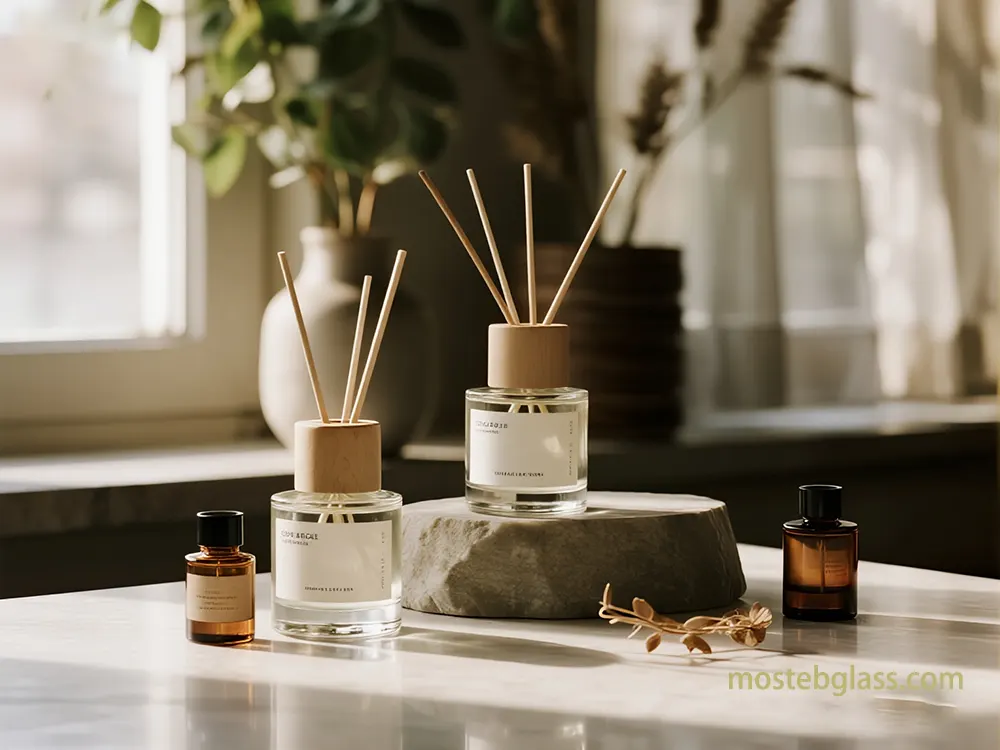
2.1. Navigating Manufacturer MOQs and Lead Times
The custom glass diffuser bottle market is full of diverse choices such as Honghua, Darui Glass, Beausino, Lianxin, Rockwood Glass, WXglass, Daxin, FEEMIO, Xuminpackaging, and Fusion Glassworks, with most of them located in China.MOQs of custom bottles change dramatically (for example, 20,000-50,000 for Rockwood Glass Super Flint, 5,000-10,000 for Lianxin non-stock).The stock models have much lesser MOQs, sometimes even as low as 100 pieces.
Lead times are very important: 3D models can be done in two weeks, bottle sketches in 24 hours.Making the prototype and the mold normally take 1-2 months.Full production of a custom order is from 15 to 60 days and in a worst-case scenario, it could be up to 90 days or 4-5 months for complex designs.Mosteb makes this process easier.
2.2. Material Selection and Customization Options
Producers can provide different glass and closure materials. Super flint glass is very clear, while flint glass is a much cheaper variant of the same type.Other than that, there is black and cobalt blue glass with FEEMIO focusing on thick, lead-less, and unbreakable glass.Closures can be of plastic, wood, bamboo, aluminum, metal, and glass caps.Rattan and fiber are the most used materials for diffuser sticks.The whole point of customization is that they can do it with surface treatments (spraying, silk-screen printing, frosting, electroplating, hot stamping, color coating), they can do the matching of the accessories, and the packaging (gift boxes, labeling) can be done for the brand that is cohesive.
3. Crafting a Unique Product Identity
A packaging partner means a lot when you want to personalize your components and create a unique signature look by using advanced decoration and bespoke design.
3.1. Advanced Decoration Techniques and Finishes
Fragrance bottle customization comprises:
- Color coating: Solid, transparent, gradient, partial, non-slip textures.
- Flocking: Soft, velvet-like, 3D, with friction and anti-fouling properties.
- Metallizing (electroplating): Bright, metallic, transparent, or non-transparent.
- Water transfer printing: Extreme temperature resistance, any shape, pattern, strong bonding, and personalization.
- Cracking: Crystalline product used for the unique 3D look.
- Other: Glitter application, polishing.
Essential branding methods for glass bottles:
- Screen printing: Perfect for complicated graphics, long-lasting, resistant to fading, scratching, and moisture.
- Pad printing: Works great for small designs on rounded surfaces.
- Digital printing: High-resolution images, personalized designs, short runs are low in cost.
- Hot stamping: Beautiful metallic foil finish.
- Laser engraving/etching: For giving personal touches.
- Embossing/debossing: Letters or images that are on the surface of the material and can be felt by hand.
- Decal application, Spot UV coating.
3.2. The Power of Tactile Design and Sustainability in Customization
Tactile elements have a strong effect on the quality of the product that people recognize and they even go to the extent of putting a monetary value on that, thus they contribute greatly to brand awareness.One of the characteristics of the soft-touch coatings is that they indicate a certain sophistication, on the other hand, glass that is made for heavy use as well as metal parts give off a feeling of luxury.The industry for packaging is going green by using eco-friendly packaging materials, influenced by the consumers and the environmental regulations.This is made up of glass which is 100% recyclable and has been used by brands like Chanel, L’Occitane, materials of plant origin (Lush), cardboard material that is 100% recyclable, and ink that is environment-friendly (Hermès).Along with that, some innovations like translucent metallization by Pochet and CMR-free Thermoluster contribute to the lowering of VOCs and ensuring recyclability.Mosteb puts more emphasis on these eco-friendly and tactile innovations.
4. Assembling the Complete Packaging Solution
One complete packaging solution means all the stuff in the pack—from caps and reeds to the outer wrapping—are all mated. And, more often than not, it’s done by co-packaging and contract filling folks.
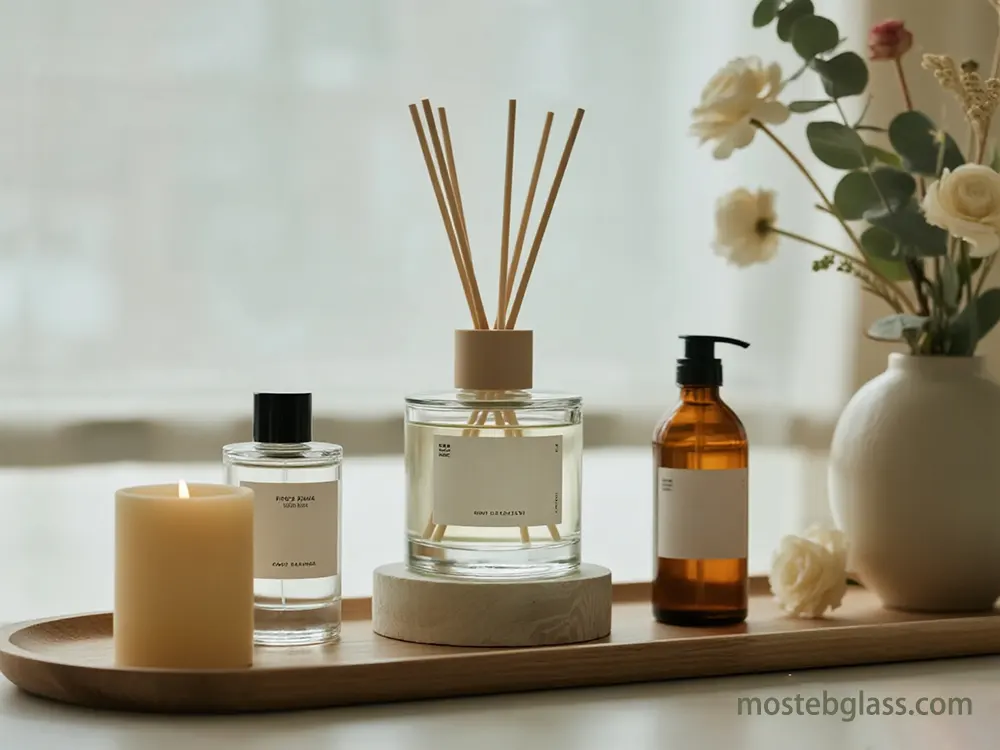
4.1. Selecting Complementary Components (Caps, Reeds, Outer Packaging)
The scent strength of a diffuser is determined by the number of reeds used:
- Rattan reeds: Highly porous, oil absorption is very efficient, release is constant, eco-friendly, do not easily clog, diffusion is slow at first.
- Fiber reeds: Artificial, better scent throw, uniform porosity, non-clogging, work well in moisture, have a long life.
- Bamboo reeds: Are natural and less expensive, however, the internal nodes block the oil flow, thus the diffusion becomes weaker.
Wood, metal (black, silver, golden mushroom), and magnetic zamac (a luxury trend) are the materials used to make diffuser caps.Different forms can be a simple plug or a decorative option, and few brands may use natural stone for caps.
Secondary or outer packaging may be in the form of rigid boxes, folding cartons, gift sets, and custom paper tubes.Sustainable alternatives such as compostable packaging and refillable containers get most of the attention.The trends for 2024-2025 are minimalism, eco-friendly design, customization, and artistical expression.
4.2. Integrating with Co-packing and Contract Filling Partners
Contract manufacturers (co-packers) can perform an entire gamut of functions that start with mixing alcohol with the fragrance oil and go on to filling, sealing, labeling, boxing, cellophane wrapping, and packing.One or more might provide kitting, shrink-wrapping, and 3PL services as well.Co-packers can work with 500 to million-volume orders, and some can be only a few thousands (e.g., 2000 units MOQ) for which they are specialized, while others are for the large (e.g., 25000+ units MOQ) production.Auria Perfumes is a full-service development and manufacturing company.
Partner selection criteria are their experience, resources, specially trained personnel, strong quality control (GMP, ISO 9001) practices, regulatory compliance (IFRA, REACH), production capacity, scalability, clear communication, and stable logistics.Mosteb is a platform that helps you find the right partners for your business.
5. Planning for Production and Market Entry
Good planning includes careful budgeting for the packaging and setting realistic timelines while dealing with complex regulations.
5.1. Budgeting for Packaging Components and Overall Costs
The unit cost of a perfume package is anywhere from $2 (for a simple plastic one) to $20 (for an intricate glass one).The face of packaging of a niche perfume may be as high as $11 per unit, but without the concentrate, the bottle costs may only be $3 to $7, with the metal cap $3-7, and good outer box $5.The entry-level perfume box is $0.20 starting with full-size boxes being $0.50-$2.00 and premium gift sets $1.00-$4.00.Custom bottle designs may cause the initial costs to raise to $10,000-$15,000 and decoration adds $2-3 per bottle.MOQs is a major factor expressing unit cost, with larger volumes leading to savings.The concentrate prices range between $5 and $150 per unit.Filling, labeling, and QC will make the cost go up by $1-$5 per unit.Mosteb is an efficient means of doing these cost-saving methods through sensible sourcing and design.
5.2. Navigating Timelines and Regulatory Compliance
The time from idea to product and finally to launch is a very complex one. It takes from 4 to 6 months to create a fragrance.The whole cycle comprises the steps of concept, formulation, design (bottle, closures, graphics), and assembly.
Standard packaging lead time is from four to six weeks, and a rushed order will be more expensive.Regulatory compliance is of utmost importance. Not having or having the wrong export papers (REACH for the EU, FDA for the US, NMPA for China, IFRA conformity) may mean shipment rejections and costs.
IFRA certification is the global safety standard.EU requires REACH, CPSR, and CPNP notification.The US FDA regulations for cosmetics ingredients that must be followed, e.g., MoCRA 2022 is setting the deadlines for the facility registration.Proactive compliance and monitoring is imperative as the standards are always changing.
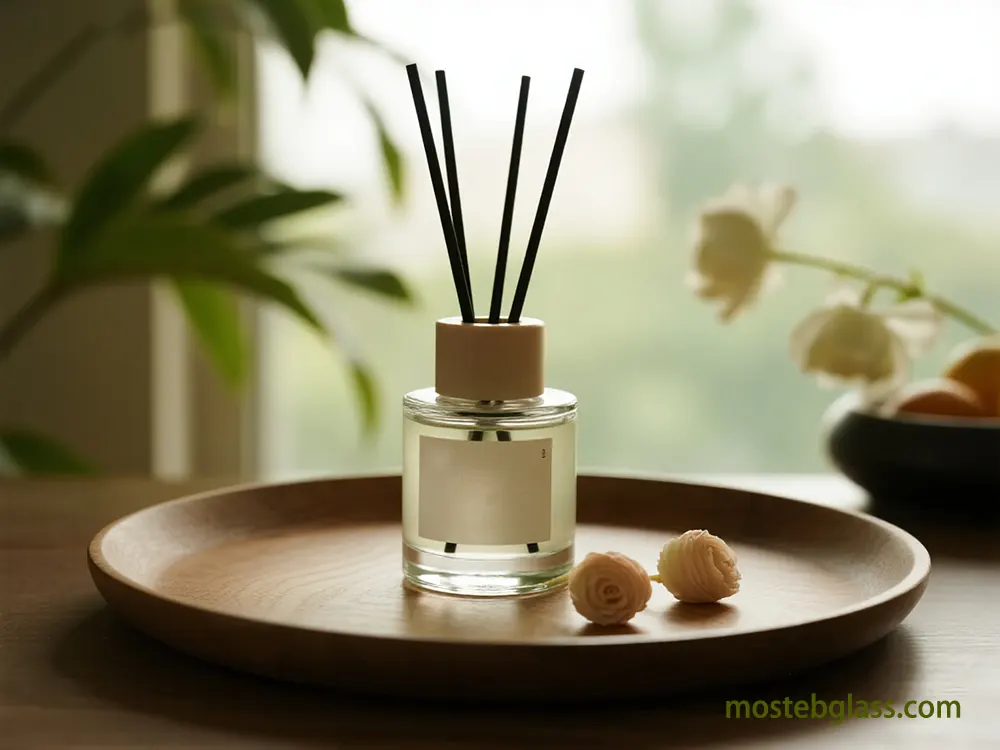
6. Cultivating a Collaborative Supplier Relationship
Partnering long-term with a packaging dealer, such as Mosteb, gives you a lot of direct and indirect benefits, which consists of: continuous support, expansion ability, and professional directions.
6.1. Advantages of Long-Term Partnerships and Evaluation Criteria
Such cooperative relations with the producer of the long-term plan result in operational continuity that thus reduces risks connected with supply chain interruptions. By creating such social ties one has a chance to save money on the road to better pricing and terms. A trusted supplier becomes a fast entrance to innovation, useful market insights, and a trend setter’s recommandations, which are the main and help factors in remaining competitive. High-quality and personalized packaging enhance a company’s image. Collaborative relationships support sustainability not only with initiatives such as biodegradable materials, recyclable packaging, and refillable systems but also by integrating them.
Key evaluation criteria for partners:
- Material Quality, Safety, Technical Capabilities: Well-made, long-lasting, safe materials, compatible with fragrances, and having certifications (REACH, FDA, ISO).
- Experience & Industry Knowledge: Extensive experience and diverse client portfolios.
- Customization & Design Flexibility: Plenty of options and a committed design team.
- Sustainability Commitment & Certifications: Embracing sustainability and having relevant certifications (BPI, SGS, Intertek, ISO, FDA, REACH).
- Production Capacity, Lead Times, MOQs: The capability to fulfill volumes and meet deadlines.
- Financial Stability & Reputation: A thorough check of the financial health and industry position.
- Transparent Communication & Responsiveness: Communication that is clear, open, and of a prompt nature.
- Strategic Location & Agile Logistics: The geographic location and efficient logistics contributing to supply chain resilience.
- Advanced Technology Integration: The use of automation and data analytics.
6.2. Best Practices for Fostering Resilient Supply Chains
It is very important to develop transparent communication, which also include sharing forecasts and timelines. Setting and constantly checking performance metrics (KPIs) provides a mechanism for terms of accountabilities. Joint innovation and development for the next step of the partnership progress. The foundation of social trust and the consideration of suppliers as strategic partners are building blocks. Giving suppliers a chance to work early in product development to save on costly redesigns later on.
In order to build resilience, one should geographically diversify the supplier base and keep buffer stocks as well. Regular performance reviews together with communication channels calling for continuous improvement are the main drivers in this field. Usage of technology such as SRM software helps to speed up the process of interactions. Flexible, long-term contracts which are negotiated well, assure business adaptability. The last but not least, living human relations and visits hold the key to understanding which is the base of perfect services. Mosteb is trying to be such a partner that embraces and applies these approaches.
